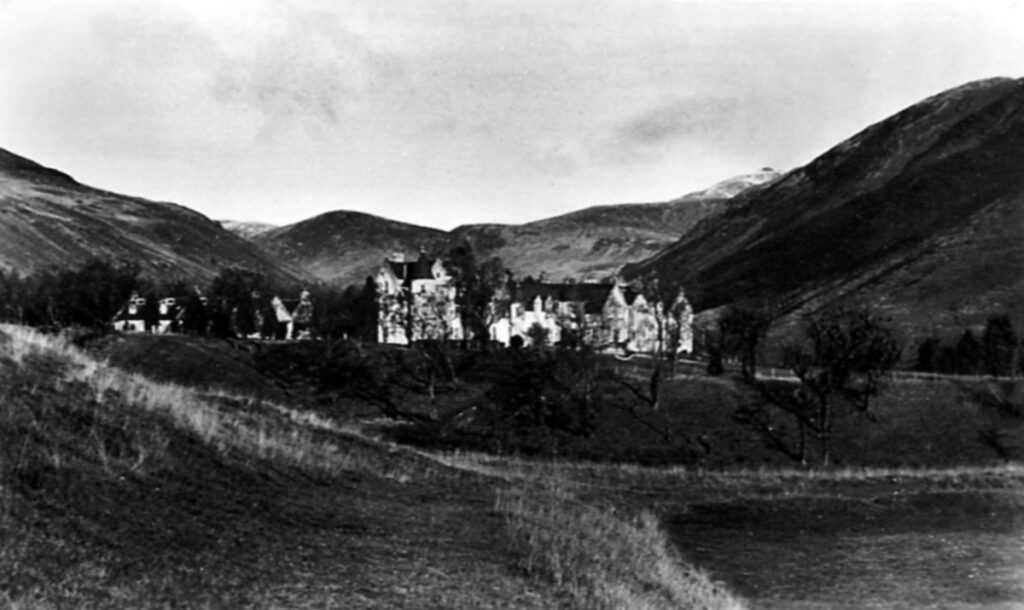
Close

Built: 1510
Dalmunzie has seen many historic events over the course of thousands of years, although the written history of Dalmunzie begins in 1510 when Sir William Scott granted lands, including Dalmunzie, to John Fergusson of Dunfallandy. A rebellion was declared between 1584 and 1589 against Robert MacRitchie, the first recorded laird, along with his son Duncan, who both resided in the original Dalmunzie Castle. People first started settling in the area during the Bronze age, as evidenced by the standing stone and burial cairn near Glenshee parish church which still stands today. This area is rich with historical tales, including Diarmid’s death and his tomb, the battle of the Caterans, Cam Ruadh’s tale, The Mighty MacCombie Mor and the Dalmunzie sword’s discovery.

Robert McRichie of Dalmunzie – Born in Scotland in the Mid-1500’s
Duncan McRichie of Dalmunzie – Born in Scotland in the Late 1500’s
Robert Mackintosh, 3rd of Dalmunzie- Born in Scotland in early 1600’s
Archibald Birkmyre – Born in 1875 and Died in 1935
John Fergusson of Dunfallandy – Original Lands owner in 1510
In 1848, as Queen Victoria was travelling to Balmoral following a trip to Gelnshee, she wrote in her diary about a castle that was ‘nestled in the heart of Glenshee and surrounded by breathtaking mountains, glens and rivers – Dalmunzie has everything on its doorstep’ – and she certainly wasn’t wrong. Hidden at the end of a secluded glen, this impressive estate lies in the south of the stunning Cairngorms National Park. With a history dating back to the Bronze Age, evidenced by the standing stone and burial cairn located on the estate, the surrounding area has been home to hundreds of settlers over many centuries.
Located in a region steeped in Scottish myth and tradition, Dalmunzie was once home to hundreds of people who spoke Gaelic, a language native to Scotland that has since become extinct in this region; during the start of the twentieth century, the Gaelic language that had been in use in Glenshee for thousands of years, finally died out. The area has also been the atmospheric backdrop to many myths and tales of folklore that have been passed through the generations, including the death of Diarmid and his tomb, the Battle of the Caterans, the mighty MacCombie Mor, and the finding of the Dalmunzie sword.
Dalmunzie’s written history began in 1510, when the first recorded laird being Robert MacRitchie, who had been declared a rebel twice in the space of five years, declared MacKintosh to be his native chief. During its heyday, Dalmunzie was a relatively heavily populated area, with over a hundred inhabitants living in hamlets and farms located on the glen between the castle and gatehouse; however, times of peace and stability did not last long, with the first English Civil War breaking out in 1645. The laird of Dalmunzie fought valiantly alongside James Graham Marquis of Montrose; sadly, not for the last time. Less than a century later, the ardent Jacobite men of Dalmunzie fought at Sheriffmuir in 1715 and the ill-fated Battle of Culloden in 1746.
Unfortunately, more trying times were soon to come as, in the early years of the 19th century, records state that a total of 35 families were evicted from Dalmunzie – a sure sign that the estate was entering a period of financial ruin. After three hundred and fifty years of ownership, the Mackintosh family lost proprietorship of the castle, which had fallen into disrepair. Luckily, a reinvigoration of Dalmunzie was imminent following the purchasing of the estate by Sir Archibald Birkmyre, who immediately set out to develop the estate by expanding the main house and building a new driveway, a golf course, and even a magnificent railway line.
It was during this period that Dalmunzie became a thriving and welcoming property again, as Sir Archibald would invite numerous noble visitors to his estate for luxurious soirées and shooting expeditions. The estate was finally bustling with activity and, after being used as a base for a mountain artillery regiment during the Second World War, it was purchased by fighter pilot Dennis Winton, who saw the potential in the estate and transformed Dalmunzie into a glorious country house hotel. Ever since this transformation, the reputation of the estate hasn’t ceased to flourish, with the current owner, Dr. Roger Aston, continuing to build on these solid foundations to create a destination that exudes elegance, grandeur, and a strong Scottish heritage.
Storied Collection
